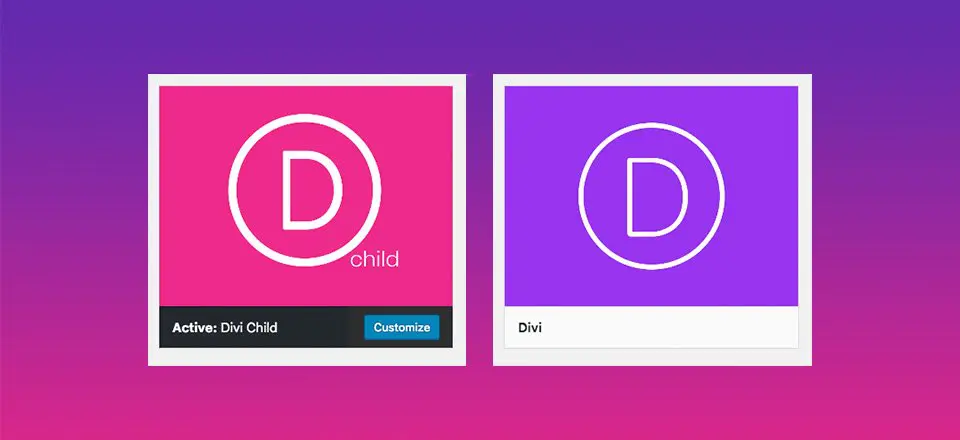I have already been sticking around the Divi community for a while now. You’ve likely heard that a child theme should be a must. Right, I’m willing to enter the choir and inform you that it’s almost necessary if you want to create custom improvements to your web. Although Divi has a Custom CSS area at Theme Options in the general tab bottom, it simply doesn’t cut if you’ve a range of custom CSS adjustments you want to build. Also it does not provide the ability to change the features of the parent theme.
The Cyber Monday sale has officially begun! For a very limited time, Divi are offering our biggest discount of all time plus free bonus gifts and exclusive perks...and that's just the beginning! Once Cyber Monday is over, this crazy deal won't be back until next year Divi Theme Discount today!
Why do you use a Divi Child Theme?
The child theme helps you to replace or improve the parent theme design and features and maintains these modifications even if the theme is changed. There are two files at the center of the child theme, function.php and a style.css files. The style.css file allows you to customize the feel and look of the website, while the functions.php file makes you improve the features of the parent theme. If you visit this section, you will soon discover that several of the tutorials enable you to add the modifications to the divi child theme.
Like I stated earlier, one of the objectives of the Divi child theme is to keep customized changes. The explanation behind this is that if you upgrade a theme, any adjustments you make to the theme’s existing files will be removed whenever the update substitutes the files to updated versions. By splitting the parent and child theme, the action you take to the child are unaffected and will not be removed if you update the parent theme.
Create a Divi Child Theme
I know it sounds a bit overwhelming at first, but it’s very easy to construct a Divi child theme. Within only a few easy stages, you’re going to have your Divi child theme set and you’re going to be rearing.
Phase 1 – Create a file for the Divi child theme
We start by creating a file folder. The good standard naming is generally the theme-child, but in our situation, we’re going to name it divi-child. This directory is where you’ll put the files that we’re going to build in the next few steps.
Phase 2: Create a file for style.css
The second phase, you need to create a file text named style.css. Make sure to modify the extension file txt to .css if you save the file. This file includes all the rules and statements that will modify or overwrite the theme ‘s original feel and look.
/*
Theme Name: Divi Child
Theme URI: https://divinotes.com/
Description: Divi Child Theme
Author: Divi Notes
Author URI: https://divinotes.com
Template: Divi
Version: 1.0.0
License: GNU General Public License v2 or later
License URI: http://www.gnu.org/licenses/gpl-2.0.html
Text Domain: divichild
*/
What is needed within that file is a brief declaration of the name of the child theme and also the title of the parent theme. This declaration is put at the top of the file.
Of all this material, the only two needed are Theme Template and Theme Name. The Divi child theme title should essentially be the unique of your child theme, and the template must be used to determine the name of the directory in which the divi parent theme is located. In our scenario, I labeled the theme Divi Child and the template Divi as the name of the folder containing the parent theme files.
Phase 3 – Create File functions.php
This file is required to queue the styles accurately.
<?php
add_action( ‘wp_enqueue_scripts’, ‘theme_enqueue_styles’ );
function theme_enqueue_styles() {
wp_enqueue_style( ‘parent-style’, get_template_directory_uri() . ‘/style.css’ );
}
The whole file is added to the directory we created in phase 1.
Phase 4 – Add the Image of the Directory
This is a graphic WordPress that will be used as a thumbnail for the divi child’s theme.

The suggested sizes for this picture are 900px high by 1200px wide and should ideally be stored as PNG, while jpeg, jpg, and gif are appropriate extensions as well.
Phase 5 – Zip of the directory
Now that we have the three files (functions.php, style.css, and screenshot.png) in your directory, final phase you will need take before you could use the divi child theme should be to zip the directory.
Phase 6-Upload and Install
Now you’ve pulled together all the elements of a divi child theme, the only thing that is left to do was to use it. It’s as simple as moving to the Dashboard, clicking on the Appearance button, and then clicking on the upload, install, and activate divi child theme prompts. At this stage, you clearly require Divi activated otherwise WordPress will report that the theme of your child’s parent has not been found.
Finish!
And you’ve got it there. It’s not really that difficult to build a divi child theme. Move ahead and prove it.







0 Comments